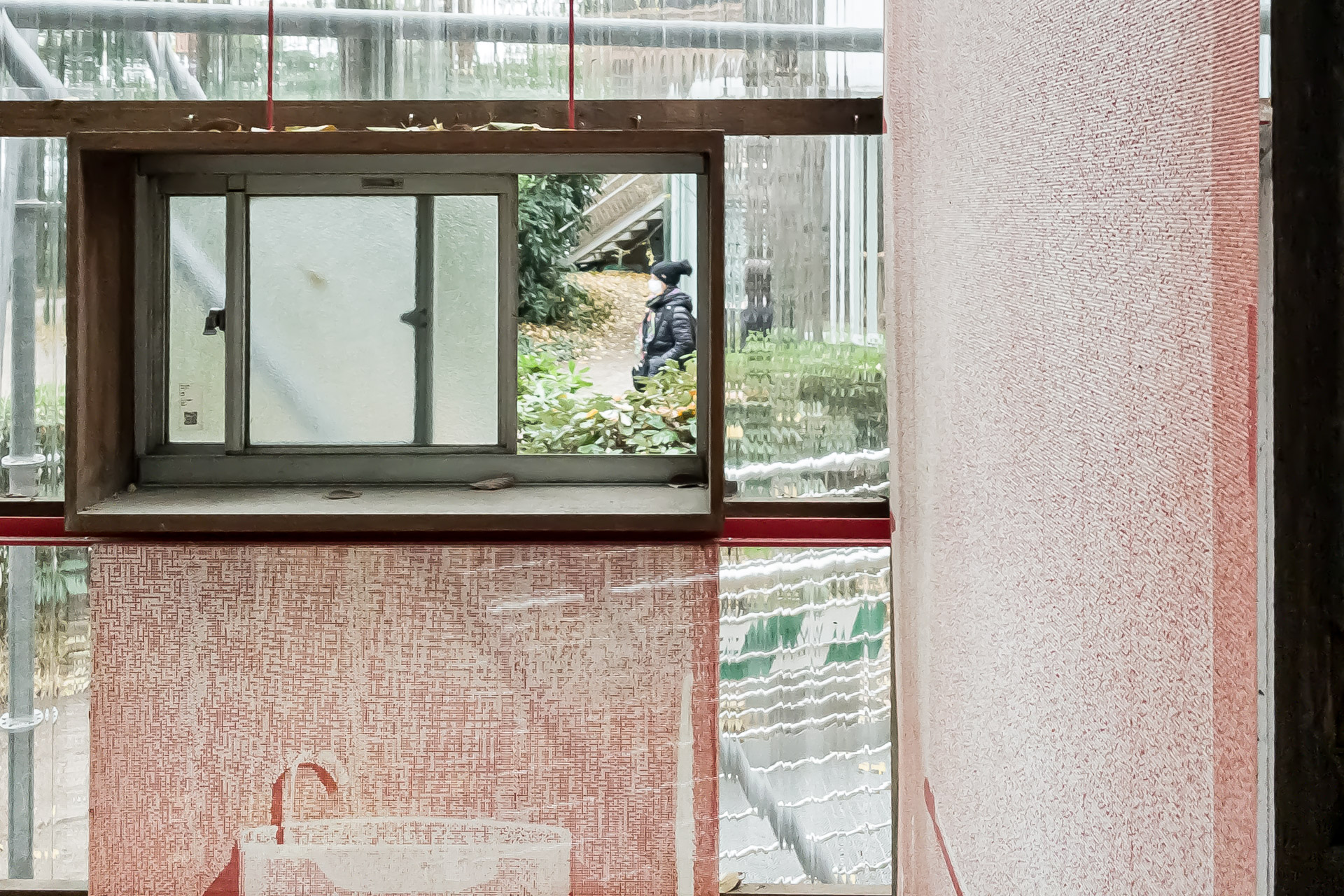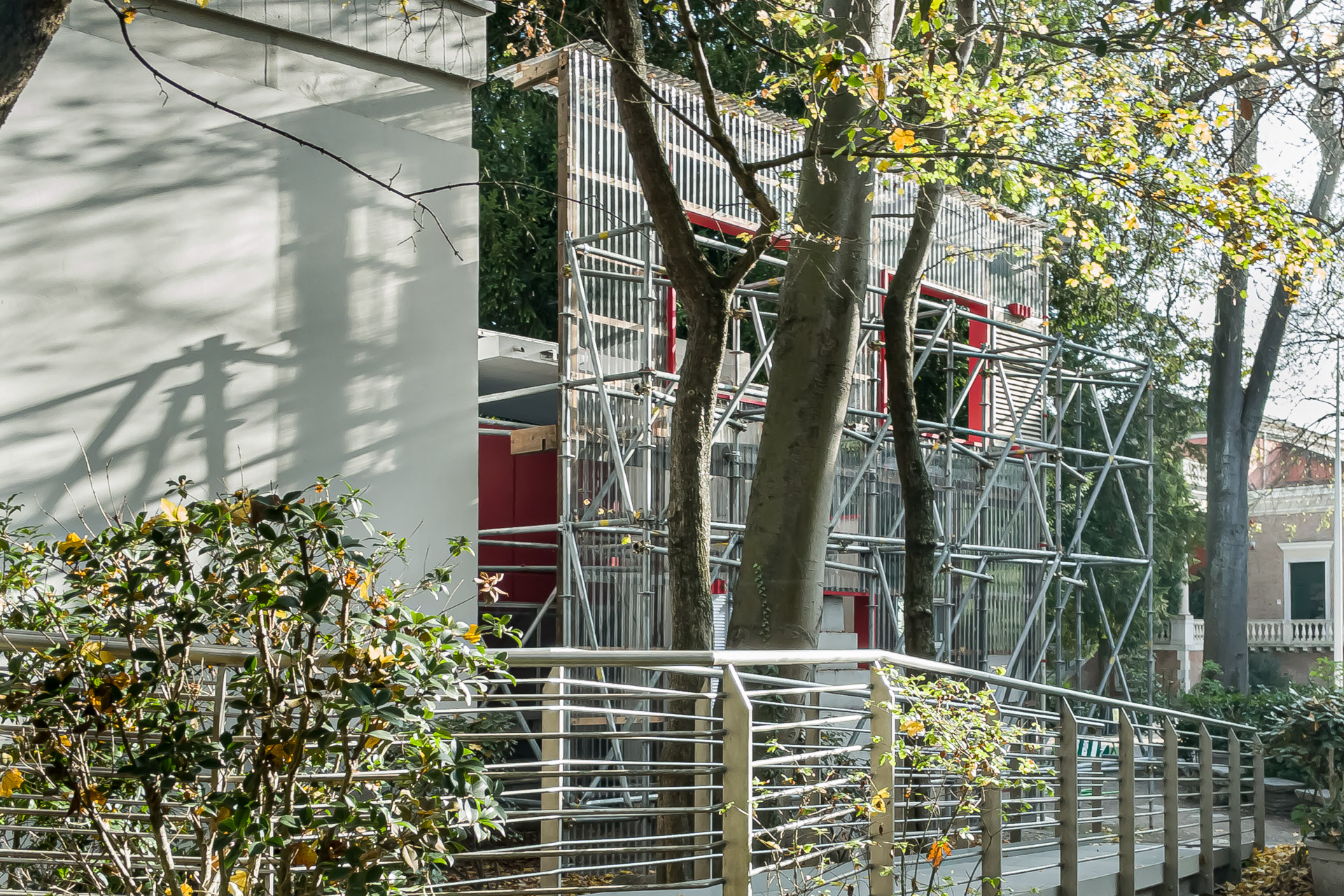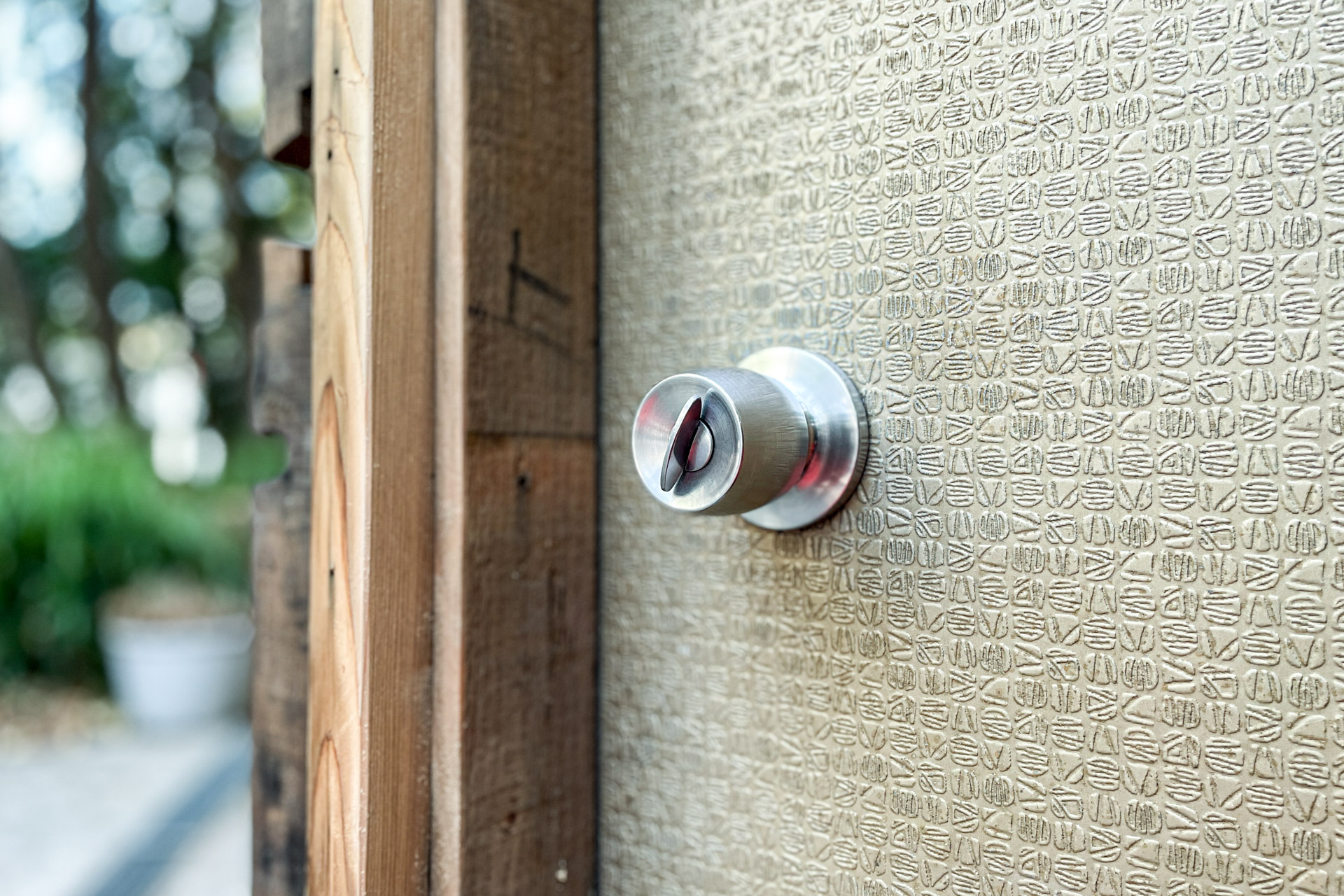The Japan Pavilion at the 17th International Architecture Exhibition, La Biennale di Venezia 2021 [Co-ownership of Action: Trajectories of Elements]
Projecting and Transferring the Texture of Life
May.2021 - Nov.2021
©Kozo KADOWAKI/Jo NAGASAKA/Ryoko IWASE/Toshikatsu Kiuchi/Taichi Sunayama/Daisuke MOTOGI/Rikako NAGASHIMA
































The Japan Pavilion at the 17th International Architecture Exhibition, La Biennale di Venezia 2021 [Co-ownership of Action: Trajectories of Elements]
Projecting and Transferring the Texture of Life
Held in Venice, Italy, the Venice Biennale International Architecture Exhibition gathers over 60 participating countries, presenting works that capture the social and cultural landscapes of their times. Alternating annually with the Biennale Art Exhibition, it is the world’s oldest and most influential celebration of the arts, bringing together architects and artists who push the boundaries of creative expression. Originally scheduled for 2020 but postponed due to the COVID-19 pandemic, the 17th International Architecture Exhibition finally took place in 2021 under the theme, “How will we live together?” This overarching question explored architecture’s role in addressing issues like coexistence, sustainability, and diversity in today’s world.
Taichi Sunayama and Toshikatsu Kiuchi of the architectural duo SUNAKI participated in this exhibition for the Japan Pavilion, joining a team of four other architects and a graphic designer.
Curated by Kozo Kadowaki, a specialist in architectural construction planning, the Japan Pavilion presented a unique reimagining of "Takamizawa House," a 65-year-old wooden residence that had been expanded and renovated over the years. This structure was disassembled, transported to Venice, and creatively reconstructed on-site. Inside the pavilion, the exhibition space was designated as a "warehouse," displaying unused structural components and parts of the Takamizawa House in chronological order. Historical photos tracing the home's lifecycle from its initial construction to its deconstruction adorned the walls, allowing visitors to experience the home’s entire journey. Due to COVID-19 restrictions, the research findings and informational content were made accessible on a dedicated website, allowing broader access from any location.
Outside the Japan Pavilion, Daisuke Motogi, Ryoko Iwase, and Sunayama and Kiuchi (SUNAKI) created installations reassembling the dismantled parts of Takamizawa House. The garden displayed reconstructed objects, such as the house's roof and its iconic storefront facade, set in a layout that created dialogues with the Venetian landscape. Motoki’s bench, crafted from the reconstructed roof, offered visitors a direct interaction with traditional Japanese wooden architectural details, while Iwase reinterpreted the emerald-green storefront facade as a towering screen that harmonized with the surrounding trees. The mesh surface of this facade shifted with the breeze, diffusing light and shadows to evoke a sense of being within a forest.
Sunayama and Kiuchi focused on reconstructing two distinctive sections of Takamizawa House: the main "Omoya" structure with its red corrugated metal facade, and the "Shintaku" staircase. These reconstructed walls conveyed a sense of the life once lived in the house. To achieve this, they adhered tarpaulins imprinted with 3D scan images of the house onto the wall surfaces and incorporated original fixtures, such as light fittings and shutters. New materials were locally sourced in Italy, where the industrial context added a fresh layer of meaning to the exhibition, such as substituting the brownish rust-preventive paint with vibrant red tones.
For the exhibition walls, they used various methods to retain the house’s original atmosphere despite the deconstruction process:
1.Projection
To recreate spaces like the toilet with its hanging towels and the staircase cluttered with daily items, they created elevation projection images using pre-demolition 3D scan data and printed these onto mesh fabric surfaces.
2.Replacement with New Materials
Materials discarded during demolition were replaced with locally available alternatives. For example, the rust-proof corrugated metal cladding on the facade was substituted with large clear polycarbonate sheets sourced from an Italian hardware store, while wallpaper and flooring patterns were scanned and reproduced on transparent panels or plywood.
3.Splicing
While beams and columns were retained, any damaged or missing sections were replaced using traditional Japanese wood joinery methods, utilizing parts salvaged from other intact sections of the house. This approach aimed to convey the traces of life once lived there, as well as the transformations induced by its deconstruction and relocation.
| Informantion | |
|---|---|
| Exhibition | The 17th International Architecture Exhibition - La Biennale di Venezia |
| Theme | How will we live together? |
| Director | Hashim Sarkis |
| Venues | Giardini di Castello, Arsenale, etc. |
| Exhibition Period | May 22, 2021 – November 21, 2021 |
| Website | https://www.labiennale.org |
| -- | |
| The Japan Pavilion | |
| Theme | Co-ownership of Action: Trajectories of Elements |
| Commissioner/Organizer | The Japan Foundation (JF) |
| Venue | Japan Pavilion (Giardini, Biennale Venue) |
| Website | https://vba2020.jp/ |
| -- | |
| Credit | |
| Curator | Kozo Kadowaki |
| Participating Architects | Jo Nagasaka, Ryoko Iwase, Toshikatsu Kiuchi, Taichi Sunayama, Daisuke Motogi |
| Participating Designer | Rikako Nagashima |
| -- | |
| Other collaborators | |
| Researchers | Norimasa Aoyagi, Aya Hiwatashi, Naoyuki Matsumoto, Tetsu Makino, Building System Design Laboratory at Meiji University (Kozo Kadowaki, Makoto Isono, Kimihito Ito) |
| Editor | Jiro Iio |
| Advisor | Kayoko Ota |
| Photographer | Jan Vranovský |
| Videographer | Hirofumi Nakamoto |
| Exhibition Design | Schemata Architects (Jo Nagasaka, Sanako Osawa, Yuhei Yagi), Studio IWASE|Architecture + Landscape (Ryoko Iwase, Kaoru Endo, Musashi Makiyama), sunayama studio + Toshikatsu Kiuchi Architect (Taichi Sunayama, Toshikatsu Kiuchi, Risako Okuizumi, Takuma Shiozaki, Kei Machida / Zu Architects), DDAA (Daisuke Motogi, Riku Murai) |
| Graphic Design | village® (Rikako Nagashima, Kohei Kawaminami, Hiroyuki Inada) |
| web developer | Kei Fujimoto |
| Structural Engineering | TECTONICA (Yoshinori Suzuki, Kakeru Tsuruta), Mitsuhiro Kanada Studio at Tokyo University of the Arts (Mitsuhiro Kanada), yasuhirokaneda STRUCTURE (Yasuhiro Kaneda) |
| Exhibition Construction | TANK (Naritake Fukumoto, Ai Noguchi, Takashi Arai), Takahiro Kai, Tsuguhiro Komazaki, Takashi Takamoto, Masayasu Fujiwara, Mauro Pasqualin, Pieter Jurriaanse, Paolo Giabardo, Valentino Pascolo, Jacopo David, Tommaso Rampazzo |
| Fabrication Cooperation | So Sugita Lab at Hiroshima Institute of Technology |
| Local Coordinator | Harumi Muto |
| Exhibition Design Management | associates (Kozo Kadowaki, Akiko Kadowaki) |
| Exhibition Design Management | associates (Kozo Kadowaki, Akiko Kadowaki) |
| -- | |
| Sponsors | |
| With special support of | Ishibashi Foundation |
| Sponsored by | Stroog Inc., JINS Holdings Inc., Suikoukai Medical Corporation, Japan, KAMAWANU CO., LTD., Window Research Institute |
| In cooperation with | under design Co., Ltd., IWASAKI ELECTRIC CO., LTD., NBC Meshtec Inc., KUMONOS Corporation, DAIKO ELECTRIC CO., LTD., Japan 3D Printer Co., Ltd, HAGIHARA INDUSTRIES INC., Rotho Blaas |
--
第17回ヴェネツィアビエンナーレ国際建築展日本館展示『ふるまいの連鎖:エレメントの軌跡』
生活の感触を投影/転写する
イタリアのヴェネツィアで開催されるヴェネツィアビエンナーレ国際建築展は世界60か国以上が参加し、年ごとに交互で開催される美術展とともにその時代・社会を映し出す最も歴史が古く最も重要な芸術の祭典として、毎年様々な建築家や美術家の挑戦的な試みが一同に介している。 2021年に開催された第17回国際建築展は、本来は2020年に開催予定だったがコロナ禍の影響により1年延期された。全体テーマを「How will we live together?(我々は共にどのように生きるのか)」として、現代社会における共生や持続可能性、多様性といった課題に対して建築が果たす役割が問われた。 この第17回国際建築展の日本館の展示に、砂木の砂山太一と木内俊克は展示作家として他4組の建築家・グラフィックデザイナーとともにプロジェクトに参加した。
建築の構法計画を専門とする門脇耕三のキュレーションのもと日本館では、増改築を繰り返しながら住み続けられてきた築65年の木造住宅「高見澤邸」を譲り受け、ヴェネツィアに運んで敷地内で創造的に再構築する取り組みを行った。館内の展示室を「資材庫」として位置づけ、再構築に使われなかった部材や部品が年代順に並べられて展示した。また、壁面には新築から解体までの記録写真が掲示され、住宅の一生を追体験できる構成とした。コロナ禍の影響もあり、リサーチ結果などの情報コンテンツはウェブサイト上に掲載し、どこからでもアクセスできるようにした。
これ以外に屋外には、元木大輔、岩瀬涼子、砂山太一+木内俊克(砂木)が、解体部材を用いた再構築のインスタレーションを展開した。庭園には、高見澤邸の屋根や看板建築のファサードなど、解体された部材を再構築したオブジェクトが点在し、それぞれが異なる形でヴェネツィアの景観と対話する配置となっている。元木大輔による屋根を再構築したベンチは、日本の伝統的な木造建築の構造を垣間見せるよう設計され、来場者が直接触れ、座ることで日本の建築技術の細部を体感できる作品となった。岩瀬涼子は、エメラルドグリーンの看板建築のファサードを塔状のスクリーンとして再解釈し、周囲の木々と調和するような配置を試みた。風にそよぐメッシュの壁面は、光と影を複雑に透過し、森の中にいるような感覚を来場者に与える。
砂山太一と木内俊克(砂木)は、高見澤邸のオモヤと呼ばれていた部分の赤いトタンで覆われたファサードと、シンタクと呼ばれていた部分の階段部を展示壁として再構築した。これらの展示壁には、高見澤邸でのかつての生活の様子を伝える役目をもたせた。壁面には3Dスキャンで得られた点群を2次元に転写したターポリンが貼られると共に、この住宅で実際に使われていた照明器具や雨戸などが取り付けられている。新しい材料は現地で入手しやすいものが使われているため、茶色に近かった錆止めペイントが鮮やかな赤になるなど、結果的にイタリアの産業的なコンテクストが反映されている。玄関扉や雨戸、雨樋、照明などは、実際に高見澤邸で使用されていたものをそのまま展示している。また、解体時に消失した要素は、以下の置き換えを行っている。
1.投影
トイレやそこにかかっていたタオル、階段室の雑多な生活用品などを再現するため、解体前に撮影された3D点群スキャンデータをもとに立面投影画像を作成し、メッシュ素材の膜に印刷している。
2.新材による代替
解体時に廃棄された部材は、現地で手に入る素材で代替している。ファサードの錆止め塗装されたトタン波板はイタリアのホームセンターで見つけた透明ポリカーボネート大波板で置き換え、壁紙の花柄模様や床のパターン柄は写真画像から模様を読み込んで、透明の板材や合板に彫り込んだ。
3.接ぎ木
柱や梁はそのまま使用しているが、傷んだり失われた部位は在来構法の接ぎ木の考え方を参照し、建物の健全な別部位から切り出
した材で置き換えた。失われざるを得なかった生活の痕跡やかつての住宅の空気、解体・移動そのものがもたらす変化を伝えることに着眼している。
--